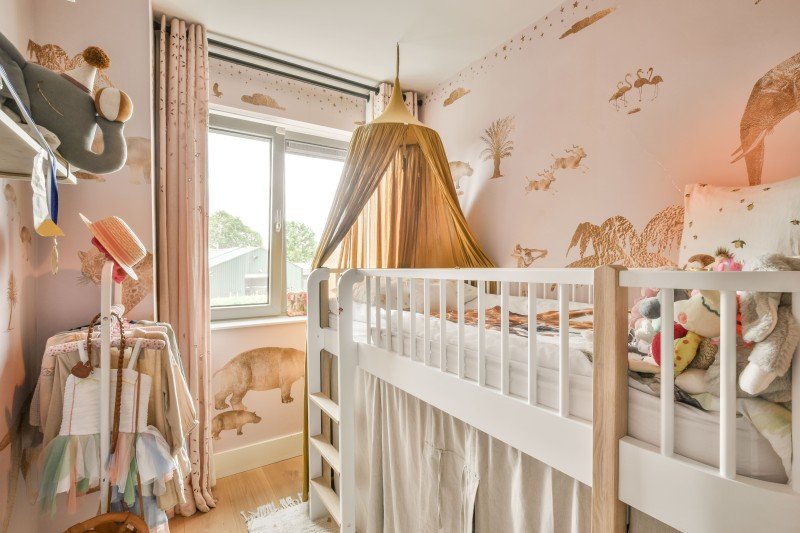Five Things You've Never Learned About Bunk Beds Sale
Bunk Beds Sale: A Comprehensive Guide to Choosing the Right Bunk Bed for Your Home
Bunk beds have long been a staple in kids's bed rooms, providing a mix of space-saving effectiveness and enjoyable. Whether accommodating siblings, good friends on slumber parties, or just taking full advantage of a playroom, bunk beds have become a vital component in contemporary family homes. As sales on bunk beds increase, it becomes increasingly essential for customers to make informed choices when buying one. nenitamascio.top will cover the fundamentals of acquiring a bunk bed, from types to safety functions, along with ideas for keeping the integrity of your investment.
Kinds Of Bunk Beds
When thinking about a bunk bed sale, it's essential to understand the various designs available on the marketplace. Below are the most common types:
Traditional Bunk Beds: These consist of 2 beds stacked one above the other, sharing a single frame. They are often the most cost-effective option.
L-Shaped Bunk Beds: This style features one bed positioned vertically and another horizontally. This plan produces extra space underneath the upper bed, which can be used for storage or a backyard.
Lofted Beds: Similar to standard bunk beds but without any lower bed. Rather, the space below can be utilized for a desk, play location, or extra storage.
Triple Bunk Beds: For households with a larger variety of kids or frequent sleepovers, triple bunk beds offer three sleeping locations in a space-efficient design.
Futon Bunk Beds: These styles merge bunk beds and futon sofas. The bottom section converts into a separate seating area, improving performance.
Convertible Bunk Beds: These beds can be separated into two private beds, making them versatile as children's requirements change over time.
Table 1: Comparison of Bunk Bed Types
Type
Description
Space Efficiency
Extra Features
Traditional Bunk Bed
2 beds stacked vertically
High
Most basic style
L-Shaped Bunk Bed
One vertical and one horizontal bed
Moderate
Play or storage space
Lofted Bed
Elevated bed with open space listed below
High
Work/play area
Triple Bunk Bed
Three stacked beds
Extremely High
Accommodates more users
Futon Bunk Bed
Bunk bed with a convertible futon
High
Multi-functional
Convertible Bunk Bed
Can be divided into two different beds
Moderate
Versatility & & durability
Safety Features to Consider
Safety is vital when investing in a bunk bed. Below are key security functions to try to find:
Guardrails: Adequate guardrails must exist on both sides of the upper bunk to prevent falls. They ought to be at least 5 inches greater than the bed mattress.
Ladder Design: Look for strong, broad ladders with slip-resistant rungs. Make sure that the angle is not too steep for easy access.
Stability: Ensure the bed is constructed with strong materials, such as solid wood or heavy-duty metal. The bed must not wobble when in usage.
Weight Limit: Check the weight capacity of the bunk bed to guarantee it can accommodate the intended users safely.
Material Safety: If possible, select beds made from non-toxic products or those fulfilling security standards for kids's furnishings.
Table 2: Essential Safety Features
Function
Description
Value
Guardrails
Sides of upper bed to prevent falls
Necessary for child security
Ladder Design
Strong, slip-resistant rungs
Help safe and simple gain access to
Stability
Develop quality to prevent wobbling
Ensures safety and durability
Weight Limit
Maximum weight capability
Prevents mishaps
Material Safety
Non-toxic, safe products
Protects kids's health
Maintenance Tips for Bunk Beds
To extend the life of your bunk bed and guarantee ongoing security, consider the following upkeep tips:
Regular Inspections: Periodically check the structure for loose screws, bolts, or any signs of wear. Tighten fasteners as needed.
Clean Periodically: Dust and clean the surface areas frequently. Use appropriate cleaners that won't harm the surface.
Examine Weight Limits: Be conscious of weight limitations, especially with older children or adults who might wish to use the upper bunk.
Prevent Climbing on Guardrails: Educate children not to use guardrails for climbing up or playing to decrease the danger of mishaps.
Regularly Asked Questions (FAQs)
Q1: What is the age limit for kids to securely use bunk beds?A: While it differs by the manufacturer, lots of recommend that kids under six need to not sleep in the upper bunk due to security concerns.
Q2: How can parents dissuade hazardous climbing?A: Setting clear rules about bunk bed usage and supervising children can assist. In addition, utilizing a bed tent can discourage climbing up while creating a fun sleep environment.
Q3: What should I think about when embellishing a room with bunk beds?A: Ensure there is sufficient space around the bunk bed for safe motion, and make use of the design to develop individualized areas for each kid.
Q4: Is a lofted bed appropriate for older children?A: Yes, lofted beds can be suitable for older kids as long as they meet safety requirements and the kid is accountable enough to use them securely.
Bunk beds serve a functional purpose while adding an element of fun to a kid's bed room. As sales of bunk beds continue to rise, careful factor to consider of types, security features, and upkeep practices is necessary for parents and caretakers. By comprehending these important factors, households can find the best bunk bed for their home, making sure both practicality and security for years to come. Whether it's for siblings sharing a room or creating a relaxing pajama party space, a well-chosen bunk bed can offer pleasure and usefulness, making it a worthy investment.
